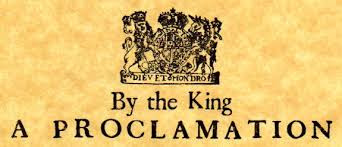Executive Orders and Royal Proclamations
When a King issues an edict without consulting with or getting the approval of Parliament it is called a Royal Proclamation. When a President makes laws it is called an Executive Order.
In Article I Section 1 of the Constitution, it is clear that all legislative powers reside in Congress. The Executive Branch only has the responsibility to execute the laws passed by Congress. An Executive Order is not legislation, it is a order issued by the President to enforce laws passed by the Congress.
All legislative Powers herein granted shall be vested in a Congress of the United States, which shall consist of a Senate and House of Representatives. Obviously the President does not have the Constitutional authority to legislate.
Once a proposed bill becomes a law the President's responsibility is to enforce the law. In order to do so he may issue an Executive Order to facilitate the execution of the law. The President does have the authority to run the Executive Branch of government and he does have the authority to issue orders that effect the employees of the Federal government.
He can create rules, regulations, policies and procedures in order to administer the Executive Branch of government. The =President does have jurisdiction over government employees, but he does not have the authority to issue decrees that effect anyone non government employee.
Most Executive Orders are an attempt to circumvent Congress and are an a flagrant abuse of power by the President. By allowing the President to violate the Constitution the Supreme Court Justices are violating their oath to preserve, protect and defend the Constitution.
During times of war of national emergency, Presidents are authorized to issue Executive Orders with the consent of Congress.


Comments